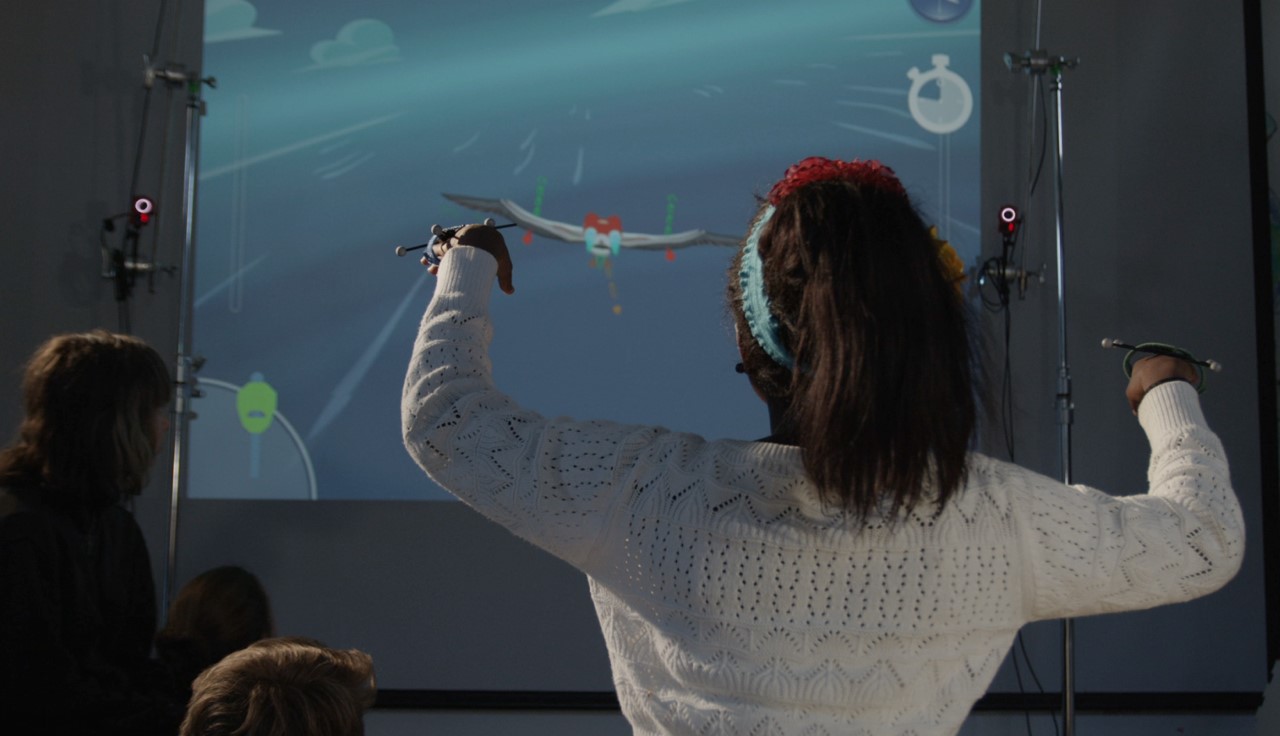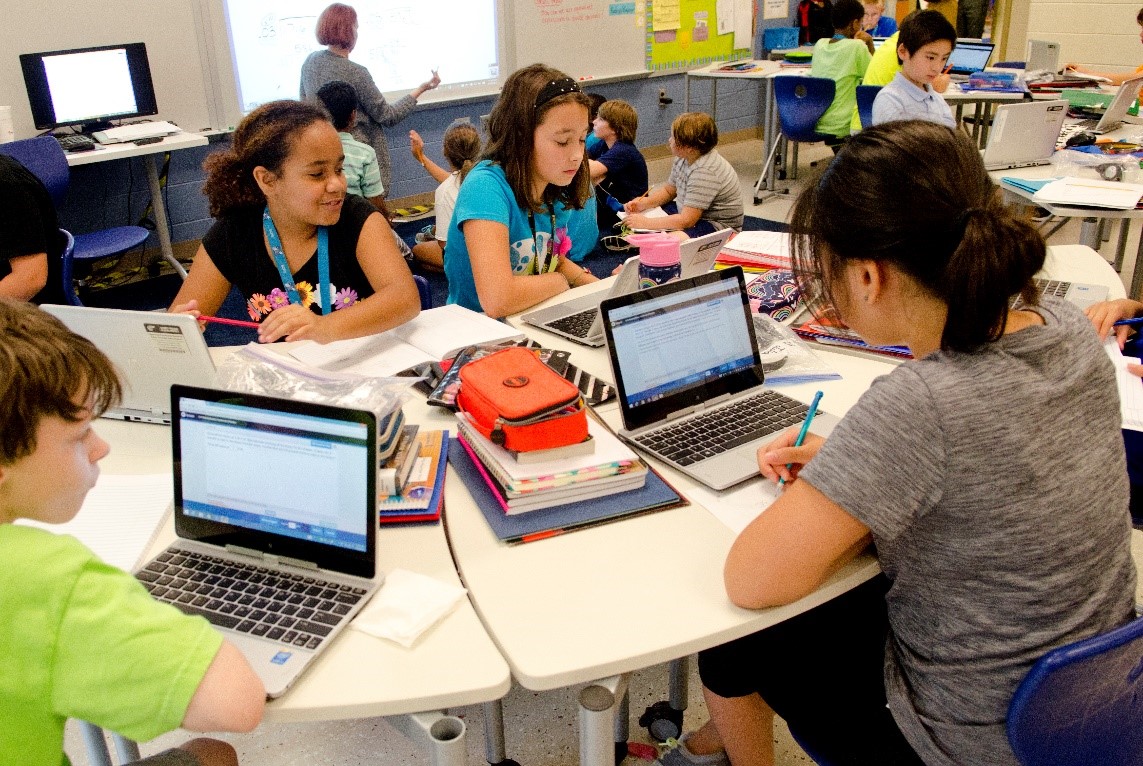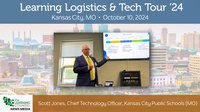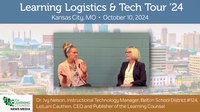According to the Consortium for School Networking’s 2015 IT Leadership Survey, 84% of school technology officials expect that at least half of their instructional materials will be digitally based within three years. There’s no doubt that a massive digital transformation is underway in schools around the country, and with big changes come big questions.
For example, in a world where a humble PDF can play a starring role in teaching and learning, how should educators build their digital curriculum? Should teachers create their own materials? Should they take it upon themselves to gather what they need from a vast sea of open educational resources? Should districts contract with companies to get what they need all in one place? Or is some combination of these options the best way to go?
To make informed decisions about these issues, it helps to have an idea of what goes into creating and updating digital curriculum—and what educators can expect from the companies supplying that curriculum. To get an insider’s look, the Learning Counsel spoke to edtech leaders. Here’s what they had to say.
Content Comes First
In conversations about digital content, words like “rigorous” and “aligned” get thrown around a lot. But how do curriculum providers actually create educational materials that live up to this billing? A first step that virtually every company out there, who is creating good content, does is find specialists who are not only are expert in a subject area but who also have classroom teaching experience. These content specialists then team with instructional designers to research standards and build aligned course plans and outlines.
These course plans and outlines are then reviewed and either approved or sent back for another round of revisions based on how well they adhere to both academic standards and rigorous, engaging—and fun—course design specifications. Teaching materials often go through multiple rounds of review before they are ready to deliver to schools and districts.
To give an outside perspective, a company called Academic Benchmarks works with a number of ed tech providers to verify that their completed materials are, in fact, aligned to the standards that they set out to cover. If the answer is yes, then Academic Benchmarks provides its seal of approval in the shape of formal alignment documentation for each course.
Creating Engagement
Another word that comes up repeatedly in conversations about digital content is “engaging.” But what does it take to make that abstraction concrete?
We asked Lucien Vattel, the CEO and Founder of the tech-based education non-profit GameDesk about this. “It’s our mission every day we come to work to create next-generation learning games and virtual learning tools and maker programs that give kids experiences that result in learning.” He continued by explaining the question he and his team ask themselves about everything they build. “With every product we create we first ask ourselves, ‘What is it about this game design, this approach that lends itself best to certain types and ways of learning or engaging or actually connecting to the concept for the individual child?’.”

A student at the PlayMaker school learns about the principles of aerodynamics by playing AERO. In this image, the game is controlled with the SMALLab System. Simply by moving their hands players have full control of rotation and flapping of the bird's wings.
He went on to say that he and his crew of “designers of learning” have an extensive checklist of things they’ve established (over time and lots of testing) that they look for and consider while building a product that is experience based and heavily immersive.
Kevin Viau, founder and CEO of online career and elective course providereDynamic Learning, said that he starts every course design by considering what will connect with today’s students. So “the old school of studying with flash cards” is out, replaced by a gamified atmosphere because, as Viau put it, “Studying in a game format is a fun and interactive way to practice with a lot of tiers or a deep level of self-discipline.”
Offering “a lot of tiers” means creating content in a variety of forms, the better to accommodate a variety of learning styles and levels. Viau said that adding downloadable podcasts that follow along with text to support reading comprehension was important to him because he wanted “to help struggling readers or mobile learners without internet access.” The choice was also personal, he said. “My love for audio books inspired the need to have options: read, listen, or do both. Our voice artists provide an engaging narration of the content that can be streamed or downloaded to the student's phone or music player.”
Todd Brekhus, president of personalized learning environment myON, said that students who have been raised on social media and online games can also be engaged by real-time data. Each student who uses myON gets an individual dashboard, and Brekhus said, “Students are excited to see their reading progress and if they can meet the reading goals that are shown.”
And just like in a video game, as students meet reading goals or complete “reading checkups,” they unlock new pieces of the platform. “For example,” Brekhus said, “completing a benchmark unlocks a new special avatar that students could use to represent their account.”

Lighthouse Schools within Baltimore County Public Schools are piloting innovation and technology with HP computers based on Intel 2-in-one systems. Because the kids are so cognitively engaged in their schoolwork there has been an 84% decrease in behavior.
Making It Personal
Every educator in the country is striving to offer students “personalized education.” How do digital curriculum providers build lessons that aren’t one-size-fits-all? According to Jen Salta, vice president of curriculum at e-learning providerOdysseyware, “Customization cannot be an afterthought. It is the foundation of the digital curriculum design process.” And the goal of all those design-review-redesign cycles is to put power in the hands of teachers. “The design of the curriculum is intentionally built to be fully customizable and empower teachers to individualize learning,” she said, “be it with our teacher authoring tool or custom and prescriptive learning paths.”
The approach with all good digital learning content is to create an atmosphere that feels like Choose Your Own Adventure. Viau’s inspiration to create eDynamic Learning came from a colleague who wanted to be an anthropologist after watching Raiders of the Lost Ark. It took him until college to realize that anthropology “did not involve poisonous spiders or lost treasure. “Today,” Viau said, “it is so important to connect student's perceived passion into a real career option. Do I like health science? If so, what part of health science should I be involved in? If I do not like blood, maybe a radiology technician or a sonographer might be a better fit.”
For Brekhus, personalization starts with giving students the freedom to mark up their digital books in a way they never could a paper textbook. So all 10,000 myON texts work with a Literacy Toolkit that lets students highlight, add sticky notes, create citations, or add their own writing in a personal reading journal.
Truly personalized learning, though, is not just about letting students do what they want. It’s about giving students what they need. To track those needs, myON built a reporting system that can be used by students, teachers, and administrators. The goal was not just breadth but depth, said Brekhus. “Our reports are divided into core details around reading ability (as measured in Lexiles), reading activity (as measured in books opened, books completed, time spent reading, pages read, and words read), and title popularity.”
Always Updating
Like all software, digital curriculum is always evolving. There is just no comparison to the textbooks of yesteryear that were years out of date the first time they are opened by a student. Today with technology its virtually real-time knowledge. Quality software, from any vendor or publisher must deliver routine updates (which can include new features, bug fixes, and new content). Most will make these updates available and quickly downloadable every month without effecting the learning path of the students in the classroom.
On top of planned additions to their platform, most companies survey customer suggestions. Improvements are perpetual. Some of these improvements include workflow enhancements, development of infrastructure and security requirements, or changes to supported browsers and operating systems.
During our interview with the myON design team we found they use an Agile Programming methodology to prioritize tasks in what Brekhus calls a “planned sprint.” Most important for educators is that updates do not require server downtime and the digital content remains available to all users. Depending on the type of update, the process can take anywhere from five minutes to several hours to implement and test before it is released to schools, teachers and students.
The eDynamic Learning technical team, make changes to lessons and graphics as needed. For example their Introduction to Social Media course, which follows a subject that obviously has a greater pace of progress, gets vigorously monitored as new technologies and platforms emerge. But courses of a broader or more general training nature may get updated annually. Viau explained some particular aspects as to how their courses are reviewed and kept relevant. He stated, “We strategically designed a floating element within the courses to keep the practicality of a course relevant. This element is known as a ‘lab assignment.’ The lab assignments are changed from time to time to bring current news content into the course. This allows students to connect real-word examples to the main ideas in the course.”
Odysseyware also combines planned and on-the-fly changes to its content. Salta said, “While we can technically update content nightly (and, in the case of discoveries and other changes, we do just that) we plan our major course and supplemental material releases to align with summer school use or for start of the school year in the fall—or sometimes, mid-year at semester time.” For updates that happen during the school, year, she added, “We are very conscious that students are working and do our best to avoid updates that would be detrimental to students as they are completing their course work.”
One over-arching fact about digital curriculum—something the Learning Counsel found in our research with companies and in talks with educators around the country—is that the creation process never ends. Every one of the companies and designers we spoke with mentioned that they rely heavily on teachers and administrators in the field and the schools and districts they work in. There is always a close feedback loop.
The philosophy and theory we saw with leading digital curriculum designers was that they are not building it to be used to teach. No, this new view on curriculum and learning tools is that it is made to create an environment where learners are put into a position to have experiences and make decisions within scenarios that allow them to learn.
Teachers are now in the position of being great facilitators of learning. As Albert Einstein once said, “I never teach my pupils. I only attempt to provide the conditions in which they can learn.”











